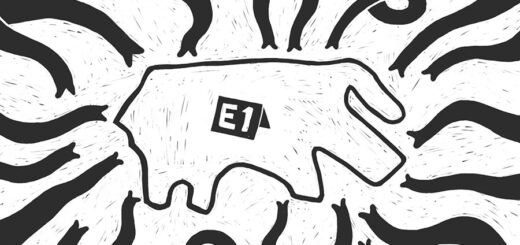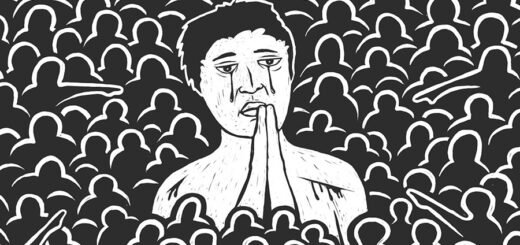The side effects of rejecting the rituals
Rituals are often seen as the remnants of our undesirable past – a baggage that we failed to unload. They are often linked with the continuance of many ills that societies face. But it is important that we understand their context prior to rejecting them.

Dictionaries define rituals as – “a religious or solemn ceremony consisting of a series of actions performed according to a prescribed order”. The act, or series of acts, is repeated in a precise manner. The association of rigidity with rituals is perhaps due to their inherent nature of being “a system of rites”.
Frankly speaking, life is all about rites. The rites of passage earmark most important events of our lives. Because the event is important, it has a rite associated with it – to mark the importance. To understand this, let us examine the idea of a birthday. Technically, our date of birth has little consequence on our present being. In a philosophical sense it does provide us a reference of time elapsed, and that of the time left. It sets clear expectations hence our grief and shock is higher when someone dies young, even when the emotional association is low.
Based on our current calendar system, one year of time duration can be considered as a unit of life with our date of birth marking the transition between these units. The transition is earmarked with a ritual called birthday celebration. Some people visit a place of workshop or conduct religious ceremony; others use it as an opportunity to party. And for some, it is both.
Just like birthdays, most of the transitions we experience are similarly marked. Majority of the festivals represent transitions, or dates of milestone events. They are often marked with unique style of celebration, clothes and food. In the corporate world, festival is the pre-festival working day when people come to office in traditional wear and participate in ‘traditional’ events. For instance, making ‘Rangoli’ during Diwali can be called a corporate ritual. If one was to look at it closely, it is no different from the many religious rites that we may perform. The only difference is that in case of religious rites, the doer has an intrinsic faith in the rite and it is linked to things much beyond the realm of change that it stands to signify. While it is easy to make fun of HR sponsored ‘rangoli’ ritual, most professionals seek pride in the ritual of ringing the bell at a stock exchange? The reverence is even higher if it is a NASDAQ bell? What one seeks pride in or laughs at is not a matter of modern versus ancient but depends on the faith system we embrace.
Let us take this argument a little further. In the present times, crossing the age barrier of 18 years is seen as a mark of adulthood. Many folks, especially gen-z, celebrate it as a very special occasion. There was nothing very special about being 18 unless modern legal system made it important. In the period preceding modern laws, custom and religion played the role of law. They ensured that there is a commonly agreed narrative of right and wrong. If we consider the Hindu system, adulthood was marked by ‘janeu sanskar’, a ceremony in which a young adult adopts a scared thread. The thread signifies coming of age, wherein the bearer can now perform ‘yagya’ and other religious ceremonies. Now he can get married and live life as an adult. Technically, both the rituals mentioned are similar but one of them is hailed as going forward.
The hailing is also not without reasons. It is said that change is the only constant. As times change, so does the idea of right and wrong, of morality, of success and failures, and of important milestones in our lives. A good example of unquestioned ritual is the marriage ritual, across cultures and religions. It is such an important milestone that even the atheists seldom question it. And while performing the ritual, even the pious seldom immerse in the religious connotation of the ceremony. The excitement of getting married overpowers everything. In an abstract sense, marriage is a ritual that allows two individuals to ‘socially’ live together as husband and wife, procreate, and be jointly responsible for the procreated.
If we were to break rituals into even smaller units then there are many rituals that we do unknowingly, many embraced as habits. The simple act of brushing our teeth or taking bath every morning is also a ritual of sorts. The act of bowing and kissing the field by sportsperson, or the stage by a performing artist, is also a ritual. The north Indian shopkeepers touching their lock followed by touching their forehead, or burning incense or paper after bringing down the shutter is a minor business ritual. The ritual also extends as spoken words. Instead of saying ‘dukaan band karna’ (closing the shop), most of them use the term ‘dukaan badana’ (to extend the shop). It is believed that choice of wrong words invite bad omen.
All these examples clearly suggest that rituals are more of a human thing than a religious thing. It is a rite to mark a change. It readies us to accept or adopt the change and helps us make that transition. While labelling a ritual as backward or forward, we seem to have overlooked the primary reasons due to which rituals ended up carving such a prime space for themselves in human mind and societies. So instead of rejecting the rituals we should strive for a middle path that allows the past to transition into the present. An outright rejection or abrupt shutting down would not only disrupt age old processes internalized by the human mind but may also lead to extreme reactions, often manifesting itself as the ‘right’.
The downside of an outright rejection got clearly demonstrated in the COVID era wherein many people suffered extensive mental health issues because the ritual of grieving was snatched away by strict lockdown norms. While some may see post death rituals as religious dogma, they are nothing but an officially demarcated time for grieving. On one hand it offers time and space to live the pain, it also ensures that we do not forever sink in our sorrows, because life must go on. Most of the theological associations keep reminding the individuals and families involved that life and death are part of the same continuum. Theology plays a key role here because other systems of knowledge have not been able to provide a more conclusive answer.
Rebellion against the past is often perceived as an idea of modernity. Yes, change is important. Change is inevitable. But in order to bring about change, it is important that we deconstruct the practices we intend to change. Such unbundling will help us understand the overall implications of a traditional ritual and hence act in accordance. To illustrate, the modern times embraces and hails live-in relationships as a hallmark of modernity but the lack of rites that mark the beginning and end seems to make the relationships fragile. Same is true for relationships as well. In the earlier times, ritual of wooing a partner seemed to have an inbuilt commitment of taking the relationship to its logical end. The whole act was a ritual in itself. But that is not true any longer. The primary assumption of relationship is a trial of sorts. Sometimes I wonder if growing number of mental health issues is due to the loneliness and vulnerability imparted by fragile relationships. At the end of the day, everyone seeks a secure and reliable shoulder to lean on. After all, sense of security is a basic animal instinct!
Just like interpersonal relationships, social relationships too are changing. Traditionally, festivals were important social glue with most of the festivities being linked to agrarian activities, migration, change of weather, etc. These festivals are losing their power due to rapid urbanization and globalization. They are becoming more personal and less social. And what remains is being high jacked by marketing needs of product companies. The ensuing gap is being filled by new festivities like news year’s eve, mother’s day, father’s day, earth day… and everything-under-the-sun day one can think of. They all are nothing but modern rituals in the process of getting established. The more established one’s already have well defined syntax, like a red rose of Valentine’s day, or drunken countdown and fireworks on the new year’s eve. Deciphering these changes can help us understand how rituals probably came into being.
Most indigenous cultures display an abundance of rituals. The organized religions, as they spread, probably transformed a lot of these customary rituals into religious entities – with adherence to procedures being an important marketing tool. That was probably the genesis of the problem because customary practices, sans religious tags, are much easier to change. This irony is regularly exhibited in the conflicts over places of worship for an omnipresent God – the God from whom we seek change in a reality, which we believe is His making.
All the meandering shared above do seem to establish the role of rituals in our lives. We cling to it because we need it. We hang on to rites we may find archaic in the absence of anything new that can be embraced. Rites are not an agreement with the past but embracement of the present so that we can litter the path on which we walk. Just like a dog has an impulsive urge to mark its territory whenever it confronts new smell, animals or people, we humans mark our life with rites and rituals.















Though rituals may have been described by the scriptures as a mere outer sheath that protects and nourishes a finer core .. an immersive experience of the same could powerfully reveal dimensions beyond ordinary perception.
‘Jagar’ could be a good example.